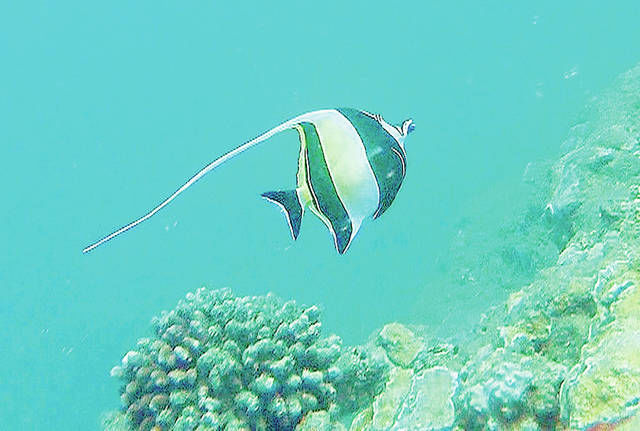LIHUE — The state now has about 20 focused management strategies to work with when it comes to bolstering the health of Hawaii’s coral reefs.
They’re outlined in the newly released Hawaii Coral Bleaching Recovery Plan, which aims to promote the health of the reefs that were bleached in the summers of 2014 and 2015.
Management strategies include planting sea urchins and corals found to be resistant to bleaching, removing sediment, establishing tighter restraints on aquarium fishing, and creating a network of fisheries management areas.
“The proposed management measures are nothing radical because many of them have already been utilized in some way shape or form around Hawaii,” said Eric Brown, with the Hawaii Coral Reef Assessment and Monitoring Program.
“Short of stopping all carbon emissions, I just hope that some of these measures are successful,” he said.
Kauai ecologist Carl Berg commended the steering committee that created the bleaching recovery plan. He said it’s thorough, but broadly based and should be tailored to specific areas.
“As a marine ecologist having done research on these issues, I fully appreciate the complexity of coral reef ecosystem health and the impact of land-based activities and global climate change have on coral reef survival,” Berg said.
Many agencies contributed to the recovery plan, including the state’s Department of Land and Natural Resources’ Division of Aquatics, the University of Hawaii, The Nature Conservancy and the National Oceanic and Atmospheric Administration.
Bruce Anderson, DLNR/DAR administrator, also highlighted the need for specified plans depending on the area to be addressed.
“We set out to identify specific and practical management measures to mitigate the effects of coral bleaching, and we accomplished this in the plan. Now we need to implement it, and it is not a one-size-fits-all situation,” Anderson said.
He continued: “Management strategies need to be tailored to the most important stressors in the specific area where bleaching is a problem. For example, an effective strategy for West Hawaii may be very different than for Kaneohe Bay.”
The report recommended focusing management measures on West Hawaii, Leeward Maui, Kaneohe Bay, and North Kauai.
To identify and evaluate management strategies, the steering committee analyzed hundreds of peer-reviewed articles related to coral bleaching and recovery. They also surveyed scientists and resource managers from countries around the world that are experiencing bleaching.
The committee then held a workshop with Hawaii-based coral researchers and ocean resource managers who ranked management strategies that would likely be most appropriate and effective in Hawaii.
“Recent bleaching events in Hawaii are a major cause for concern, as coral reefs provide the foundation for most of our nearshore marine life,” Anderson said.
He continued: ““This is world-wide crisis. From a practical standpoint, we can’t do much about global warming, or the seawater temperature rise that is undoubtedly linked to global warming. We need to do what we can to help reefs recover from bleaching events and to try to make our reefs more resilient.”
Out of the more than 20 management strategies considered, those that ranked the highest involved the creation of a network of well-designed fisheries management areas with a focus on herbivore management, according to DLNR.
“Limiting or prohibiting the take of fish that eat algae, such as parrotfish, is particularly important. These fish help to prevent the overgrowth of algae on corals, as the algae prevents coral polyps from settling on hard surfaces and growing after a bleaching event,” said Anderson.
Also high on the ranking of management actions is reducing sediment and polluted runoff that stresses coral reefs and may inhibit recovery.
Prohibiting the collection of aquarium fish ranked relatively low on the list of management strategies. Most aquarium fish are not herbivores and they represent a very small proportion of the biomass taken daily by commercial and non-commercial fishermen, according to DLNR.
While some action is being taken, some Kauai people say it’s not enough.
“There is a wealth of information and innovative ideas literally right in our own backyard from Hawaiian organizations like OSI, Reef Guardians and many others dedicated to improving the health of the reefs in and around the Hawaiian islands,” said Harry Rabin, of ReefGuardians Hawaii.





